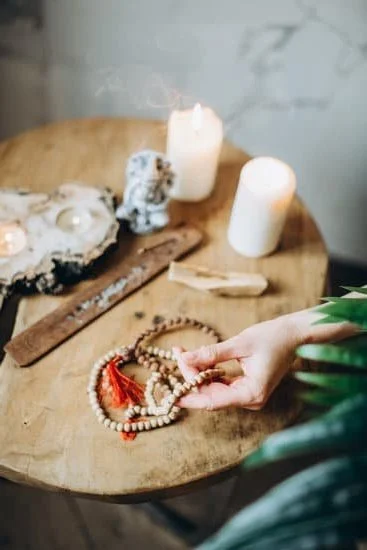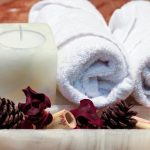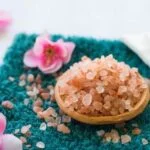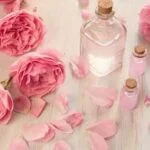How do you use a aromatherapy diffuser to enjoy the benefits of this popular wellness practice? Aromatherapy involves using essential oils to promote physical and emotional well-being, and a aromatherapy diffuser is a key tool in dispersing these oils into the air.
In this article, we will explore the basics of aromatherapy, the benefits of using a aromatherapy diffuser, the different types of diffusers available, how to choose the right essential oils for your diffuser, step-by-step instructions on how to use a diffuser, maintenance and cleaning tips, as well as safety precautions when using aromatherapy diffusers.
Aromatherapy has been used for centuries as a natural way to improve mood, relieve stress, and support overall health. The practice involves inhaling the aroma of essential oils extracted from plants to stimulate brain function and boost well-being. Aromatherapy can be used through inhalation, topical application, or with the use of a aromatherapy diffuser. This article will focus on how to use an aromatherapy diffuser effectively to enjoy its various benefits.
When it comes to using a aromatherapy diffuser, it’s important to understand that there are different types available on the market. Each type has its own unique features and benefits. Understanding these differences will help you choose the right one for your needs and preferences.
Additionally, choosing the right essential oils for your diffuser is crucial in achieving the desired therapeutic effects. In the following sections, we will delve deeper into these topics and provide you with expert tips on getting the most out of your aromatherapy experience with a diffuser.
Benefits of Aromatherapy and Aromatherapy Diffusers
Aromatherapy has been used for centuries as a natural way to promote wellness and relaxation. The use of essential oils in aromatherapy can have various benefits, including reducing stress and anxiety, improving sleep quality, easing headaches, and boosting mood and cognitive function. Aromatherapy diffusers are an effective way to disperse essential oils into the air, allowing you to enjoy these benefits in your home or workplace.
Benefits of Using Aromatherapy Diffusers
One of the main benefits of using an aromatherapy diffuser is that it allows you to experience the therapeutic effects of essential oils through inhalation. When the essential oils are dispersed into the air, they can be inhaled and absorbed by the body, providing a range of physical and emotional benefits. In addition to promoting relaxation and stress relief, aromatherapy diffusers can also help purify the air, eliminate odors, and create a calming atmosphere.
Enhancing Health and Well-Being
Using an aromatherapy diffuser with certain essential oils can also help enhance physical health. For example, eucalyptus oil is known for its decongestant properties and can be used to relieve respiratory issues such as coughs and colds when diffused into the air. Similarly, lavender oil is well-known for its ability to promote relaxation and improve sleep quality when used in an aromatherapy diffuser before bedtime.
Creating a Pleasant Environment
Aromatherapy diffusers can also be used to create a pleasant environment at home or work. By choosing essential oils with uplifting or energizing properties such as citrus or peppermint, you can improve focus and concentration during work hours or create a refreshing atmosphere in your living space. Aromatherapy diffusers offer a convenient way to enjoy the benefits of essential oils while transforming your surroundings into a more peaceful and enjoyable space.
Types of Aromatherapy Diffusers
Aromatherapy diffusers come in various types, each with its own unique way of dispersing essential oils into the air. Understanding the different types of aromatherapy diffusers can help you choose the best one for your needs and preferences. Here are the most common types of aromatherapy diffusers:
- Ultrasonic Diffusers: These diffusers use ultrasonic vibrations to break down essential oils into a fine mist that is then dispersed into the air. They also act as humidifiers, adding moisture to the air.
- Nebulizing Diffusers: Nebulizing diffusers work by using pressurized air to atomize essential oils into tiny particles that are released into the air in a concentrated form. This type of diffuser does not require water or heat, making it ideal for preserving the therapeutic properties of essential oils.
- Evaporative Diffusers: Evaporative diffusers utilize a fan or heat source to spread essential oil molecules into the air. These diffusers typically require a pad or filter that is soaked in essential oils, and the airflow helps to evaporate and disperse the scent.
- Heat Diffusers: Heat diffusers use heat to gently warm and disperse essential oils into the air. While these diffusers are simple to use, they may alter the chemical composition of some essential oils due to the heat.
- Reed Diffusers: Reed diffusers consist of a container with a base oil and reed sticks that absorb and release the fragrance of essential oils. The reeds allow for a slow and subtle release of aroma over time, making them ideal for small spaces.
Now that you’re familiar with the different types of aromatherapy diffusers available, you can consider which one aligns with your preferences and needs when it comes to enjoying the benefits of aromatherapy in your home or workspace.
Understanding how each type works is crucial in determining how do you use an aromatherapy diffuser optimally based on its specific design and functionality. Whether you prioritize preserving the therapeutic properties of essential oils, creating a calming atmosphere, or simply adding pleasant scents to your environment, there is a suitable aromatherapy diffuser for everyone’s needs and preferences.
Choosing the Right Essential Oils for Your Aromatherapy Diffuser
Aromatherapy diffusers are a popular way to enjoy the benefits of essential oils in your home or office. One of the most important steps in using an aromatherapy diffuser is choosing the right essential oils to use with it. Different essential oils have different properties and can be used for various purposes, so it’s essential to select the ones that align with your needs and preferences.
When choosing essential oils for your aromatherapy diffuser, consider the therapeutic benefits you want to achieve. For example, lavender oil is known for its calming and relaxing properties, making it an excellent choice for stress relief and promoting a good night’s sleep. On the other hand, peppermint oil is invigorating and can help boost energy and mental clarity. Researching the various essential oils available can help you decide which ones will best suit your desired outcome.
It’s also important to consider personal preferences when selecting essential oils for your aromatherapy diffuser. Some people may already have favorite scents, while others may prefer certain aroma profiles over others. Additionally, taking into account any sensitivities or allergies you or your family members may have is crucial when choosing essential oils.
| Essential Oil | Therapeutic Benefits |
|---|---|
| Lavender | Calming, promotes relaxation |
| Peppermint | Invigorating, boosts energy |
| Lemon | Uplifting, purifying |
Step-by-Step Guide on How to Use an Aromatherapy Diffuser
Aromatherapy diffusers are a popular way to enjoy the benefits of essential oils in your home or workspace. These devices work by dispersing a fine mist of essential oil into the air, allowing you to inhale the scent and experience the therapeutic effects. In this section, we will explore a step-by-step guide on how to use an aromatherapy diffuser.
Step 1: Choose Your Essential Oil
The first step in using an aromatherapy diffuser is to choose the essential oil you want to use. Different essential oils have different therapeutic properties, so it’s important to select one that aligns with your needs and preferences. Whether you’re looking for relaxation, energy boost, or relief from a specific ailment, there’s an essential oil for you.
Step 2: Add Water
Once you’ve selected your desired essential oil, the next step is to add water to your diffuser. Most diffusers have a designated water reservoir that you can fill according to the manufacturer’s instructions. It’s important not to overfill the reservoir, as this could affect the diffusion process.
Step 3: Add Essential Oil
After filling the water reservoir, add a few drops of your chosen essential oil into the water. The number of drops will depend on the size of your diffuser and your personal preference for scent strength. Refer to the manufacturer’s guidelines for specific recommendations on how many drops to use.
By following these simple steps and referring to your specific aromatherapy diffuser’s instructions, you can easily enjoy the benefits of aromatherapy in your daily routine. As with any new product or device, it may take some trial and error before finding what works best for you – but don’t be discouraged. With time and practice, using an aromatherapy diffuser will become second nature, enhancing your well-being and overall environment.
Maintenance and Cleaning Tips for Aromatherapy Diffusers
Aromatherapy diffusers not only provide a relaxing and calming atmosphere, but they also offer numerous health benefits. However, to fully enjoy the benefits of aromatherapy, it is crucial to maintain and clean your diffuser regularly. Proper maintenance ensures that your diffuser functions efficiently and prolongs its lifespan.
Firstly, it is important to follow the manufacturer’s instructions for cleaning your diffuser. Most diffusers can be cleaned using a mixture of water and white vinegar. This solution helps to remove any oil residue and mineral build-up from the internal components of the diffuser. Regular cleaning also prevents mold and bacteria growth, which can be harmful when released into the air.
In addition to regular cleaning, it is essential to change the water in your diffuser after each use. Stagnant water can become a breeding ground for bacteria and mold, affecting both the performance of the diffuser and the quality of the aroma dispersed into the air. By emptying old water and thoroughly drying the tank between uses, you ensure that your diffuser remains clean and free from any impurities that may affect its function.
It is also advisable to clean the exterior of your aromatherapy diffuser with a soft cloth or cotton swab dampened with a mild detergent. Make sure to dry all parts thoroughly before assembling your diffuser again. Regular maintenance not only keeps your aromatherapy experience pleasant but also extends the life of your diffuser, making it an investment worth taking care of.
| Maintenance Tips | Cleaning Tips |
|---|---|
| Follow manufacturer’s instructions | Use water & white vinegar mixture |
| Change water after each use | Clean exterior with mild detergent & dry thoroughly |
Safety Precautions and Best Practices for Using Aromatherapy Diffusers
When using an aromatherapy diffuser, it is important to prioritize safety to ensure a pleasant and beneficial experience. Here are some safety precautions and best practices for using aromatherapy diffusers:
- Place the diffuser on a flat, stable surface: Ensure that the surface where you place your diffuser is flat and stable to prevent any accidental spills or tipping over.
- Use clean, filtered water: It is important to use clean, filtered water in your diffuser to avoid clogging and ensure the proper diffusion of essential oils.
- Follow manufacturer’s instructions: Different types of aromatherapy diffusers may have specific usage instructions provided by the manufacturer. Be sure to read and follow these instructions carefully.
In addition to safety precautions, there are also best practices that can enhance your aromatherapy experience while using a diffuser:
- Choose high-quality essential oils: Using pure, high-quality essential oils can make a significant difference in the effectiveness of your aromatherapy session.
- Start with a low concentration: When starting out with a new essential oil or blend, begin with a low concentration in your diffuser and adjust as needed based on your preference.
- Avoid overcrowding the space: While it may be tempting to use a large amount of essential oil for a strong aroma, it is best to start with a moderate amount and avoid overcrowding the space with an overpowering scent.
By following these safety precautions and best practices, you can make the most out of your aromatherapy experience while using a diffuser. Remember to always prioritize safety and mindfulness when incorporating aromatherapy into your daily routine.
Conclusion
In conclusion, aromatherapy and aromatherapy diffusers have the potential to significantly impact our daily lives in a positive way. The use of essential oils can promote relaxation, reduce stress, improve sleep, and enhance mood. Aromatherapy diffusers provide a convenient and effective way to enjoy these benefits, whether at home or in the office. With various types of diffusers available, individuals can choose the one that best suits their preferences and needs.
Understanding the basics of aromatherapy and selecting the right essential oils are essential steps in maximizing the benefits of using an aromatherapy diffuser. Whether it’s an ultrasonic, nebulizing, evaporative, heat, or reed diffuser, each type has its advantages and considerations. Knowing how to properly use and maintain a diffuser is crucial for getting the most out of this transformative practice.
Aromatherapy has been used for centuries as a natural healing therapy, and incorporating it into daily life through the use of aromatherapy diffusers can contribute to overall well-being. By following safety precautions and best practices, individuals can experience all that aromatherapy has to offer. With some knowledge and care, anyone can harness the power of aromatherapy to enrich their daily lives.
So next time you wonder “how do you use an aromatherapy diffuser? “, just remember that with a few simple steps, you can bring the benefits of this ancient practice into your modern lifestyle.
Frequently Asked Questions
Do You Have to Put Oil in a Diffuser?
Yes, you have to put oil in a diffuser in order for it to work properly. The oil is what creates the aroma and therapeutic benefits when the diffuser is turned on.
How Many Drops of Essential Oil Do You Put in a Diffuser?
The number of drops of essential oil you put in a diffuser depends on its capacity, as well as your personal preference for scent strength. Generally, 3-5 drops per 100ml of water is a good starting point.
Where Do You Put a Diffuser in a Room?
When placing a diffuser in a room, it’s best to position it where the mist can easily disperse throughout the space. Placing it at table level or higher can help distribute the scent evenly. Avoid placing it near open windows or air vents that could affect its performance.

Are you looking for a natural way to improve your health and wellbeing?
If so, aromatherapy may be the answer for you.






